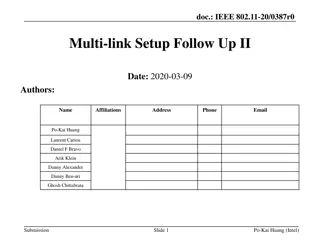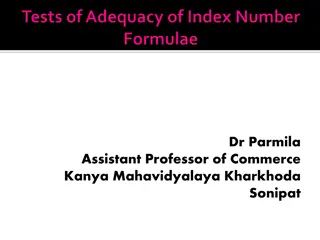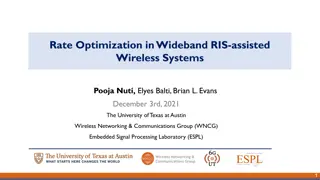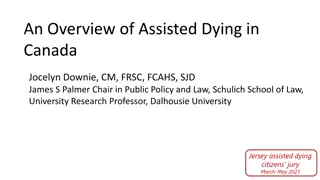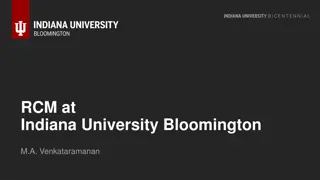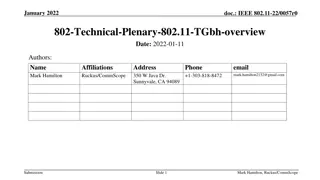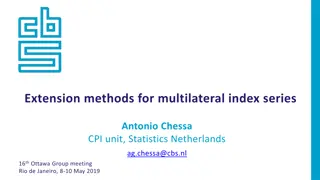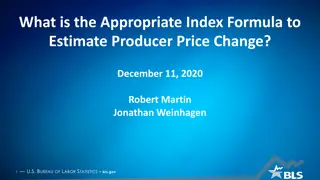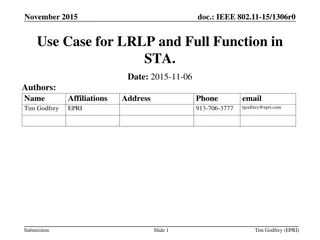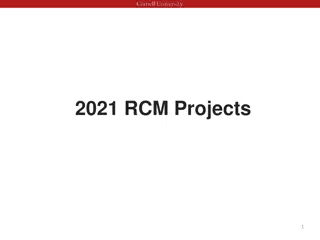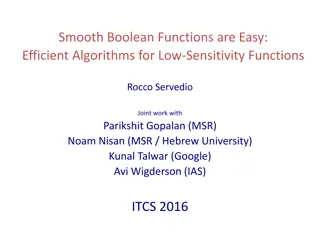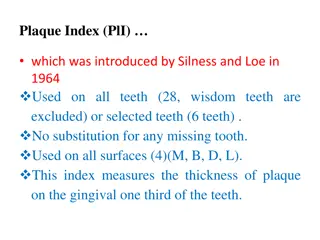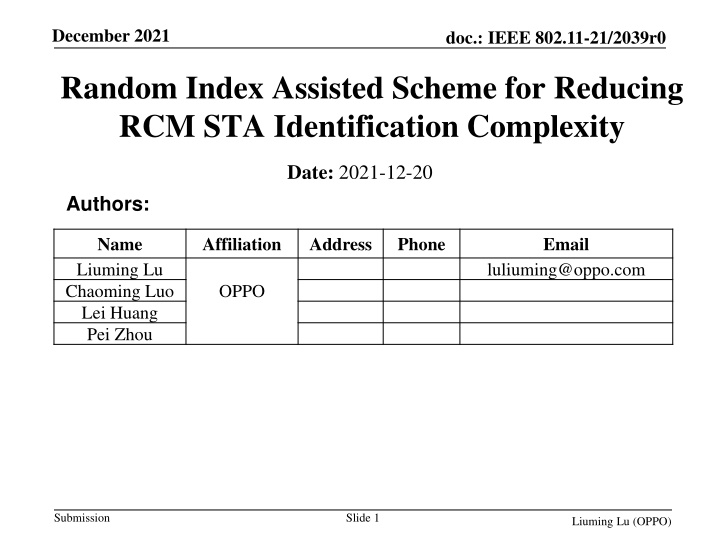
Random Index Assisted Scheme for Reducing RCM STA Identification Complexity
Learn about a random index assisted scheme designed to reduce computational complexity in identifying STAs in IEEE 802.11-21/2039r0. This scheme aims to preserve user privacy while alleviating the burden on APs by using random indexes to look up possible keys.
Download Presentation

Please find below an Image/Link to download the presentation.
The content on the website is provided AS IS for your information and personal use only. It may not be sold, licensed, or shared on other websites without obtaining consent from the author. If you encounter any issues during the download, it is possible that the publisher has removed the file from their server.
You are allowed to download the files provided on this website for personal or commercial use, subject to the condition that they are used lawfully. All files are the property of their respective owners.
The content on the website is provided AS IS for your information and personal use only. It may not be sold, licensed, or shared on other websites without obtaining consent from the author.
E N D
Presentation Transcript
December 2021 doc.: IEEE 802.11-21/2039r0 Random Index Assisted Scheme for Reducing RCM STA Identification Complexity Date: 2021-12-20 Authors: Name Liuming Lu Chaoming Luo Lei Huang Pei Zhou Affiliation Address Phone Email luliuming@oppo.com OPPO Submission Slide 1 Liuming Lu (OPPO)
December 2021 doc.: IEEE 802.11-21/2039r0 Motivation 802.11bh uses RMA (Randomized MAC Address) to protect user privacy. However, when applying RMA for STA, the AP has to identify STAs for each received frame. Typical methods for identifying STA with RMA could be signature or encryption assisted methods. In both scheme, the AP has to use the STA address key one by one to identify STA. This would introduce high computational complexity in the AP side. New mechanism should be designed to reduce the AP computational complexity. In the meantime, the user privacy should be preserved when introducing such new mechanism. Submission Liuming Lu (OPPO) Slide 2
December 2021 Recap: Signature or Encryption Assisted STA Identification doc.: IEEE 802.11-21/2039r0 The AP store each STA address key for the STA identification after the negotiation with the STAs When a RMA STA sends frames to AP, AP needs to use the address key one by one to identify the STA. This would introduce high computational complexity. STA1 Address Key 1 AP frame with RMA (e.g. TA) STA2 Identify Identify Address Key 2 frame with RMA (e.g. TA) STAn Address Key n Submission Slide 3 Liuming Lu (OPPO)
December 2021 doc.: IEEE 802.11-21/2039r0 Procedure for Random Index Assignment (1) We proposes a random index list assisted scheme to alleviate the STA identification complexity, which uses a random index to look up possible keys. AP STA MAC address 1 AP caches STA s address key and assigns a random index list for the address key STA informs its public key and address key AP assigns a random index list encrpted with the public key STA decrypts the random index list with its own private key MAC address 2 STA carries a random index in (Re)Association Request frame and Data frame. AP gets the address key based on the random index Submission Liuming Lu (OPPO) Slide 4
December 2021 Procedure for Random Index Assignment (2) doc.: IEEE 802.11-21/2039r0 Step 1: The STA sends its public key and address key in Authentication frame to the AP. Step 2: The AP sends the encrypted random index list to the STA in Authentication frame. - Each address key corresponds to a random index list. - The random index list could be a set of specified random numbers or replaced by a range . a set of specified random numbers, such as {62, 8, 123} A range, such as [63, 128]; - The random index list of different STAs could be overlapped. - The random index list is encrypted by STA s public key. Step 3: The STA decrypts the random index list with its private key and carries one random index in the following (Re)Association Request frame and/or Data frame. - If range" is used in step 2 , the STA randomly select one value in the received range Step 4: AP gets the address key according to the random index, and identifies STA using that address key. If a key index is mapped to multiple address keys, AP has to try each of them to get the correct identification. - shown in next slide Submission Liuming Lu (OPPO) Slide 5
December 2021 doc.: IEEE 802.11-21/2039r0 Procedure for Random Index Assignment (3) frame with random index i STA1 AP Random Index 1 address key 1 Random Index 1 address key 1 Random Index 2 address key 1 Random Index 2 Random Index 3 address key 1 Random Index 3 address key 2 address key 2 STA2 Random Index 4 address key 2 Random Index 5 Random Index 3 address key 2 Random Index 4 For example, STA1(address key 1): 2, 5, 35 [0, 63], STA2 (address key 2): 35, 52, 63 [32, 127] Random Index 5 Submission Slide 6 Liuming Lu (OPPO)
December 2021 doc.: IEEE 802.11-21/2039r0 Benefits Our scheme could even improve the user privacy, in the meanwhile reducing identification complexity. Reducing Identification Complexity: AP assigns the random index list for each STA address key, and sends the random index list to the STA. For each STA sending frame, it carries one key index from the random index list. The AP uses the key index to get the address key and identify the STA; User Privacy Protection: The random index list of different STAs could be overlapped to avoid using the random index to track one specified STA; The random index list is encrypted for transmission to avoid eavesdropping Submission Slide 7 Liuming Lu (OPPO)
December 2021 doc.: IEEE 802.11-21/2039r0 Straw Poll Do you agree to use a random index assisted scheme for reducing RCM STA identification complexity in 11bh? Y/N/A Submission Slide 8 Liuming Lu (OPPO)
December 2021 doc.: IEEE 802.11-21/2039r0 References [1] 11-21-0332r27, Issues Tracking [2] 11-21-1083r0, A Signature-based Method for Identifying STAs with Randomized MAC Addresses [3] 11-21-1585r11, Identifiable Random MAC Address Submission Slide 9 Liuming Lu (OPPO)


